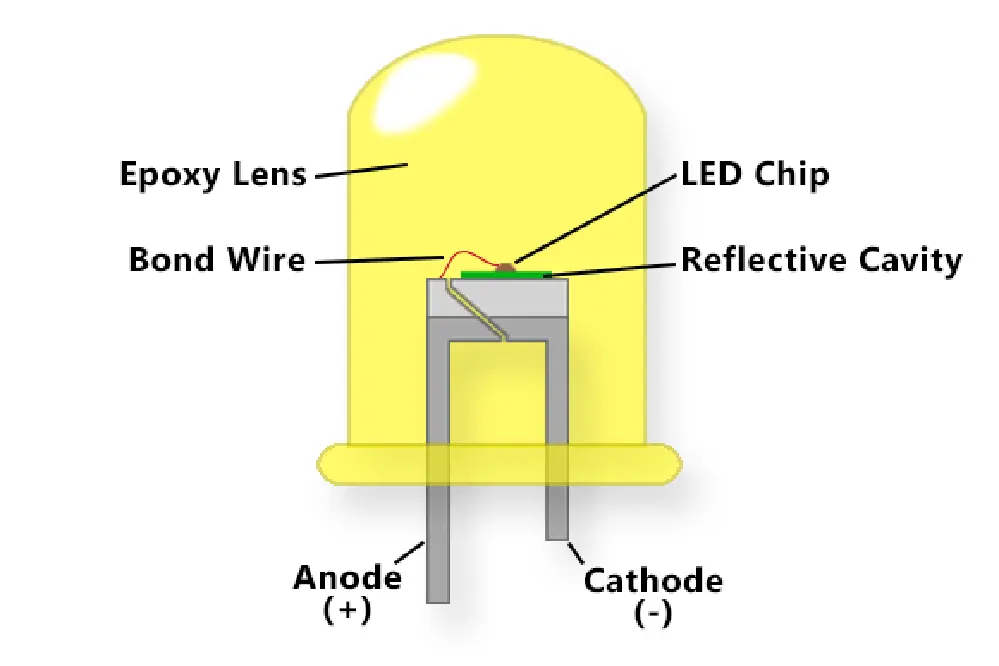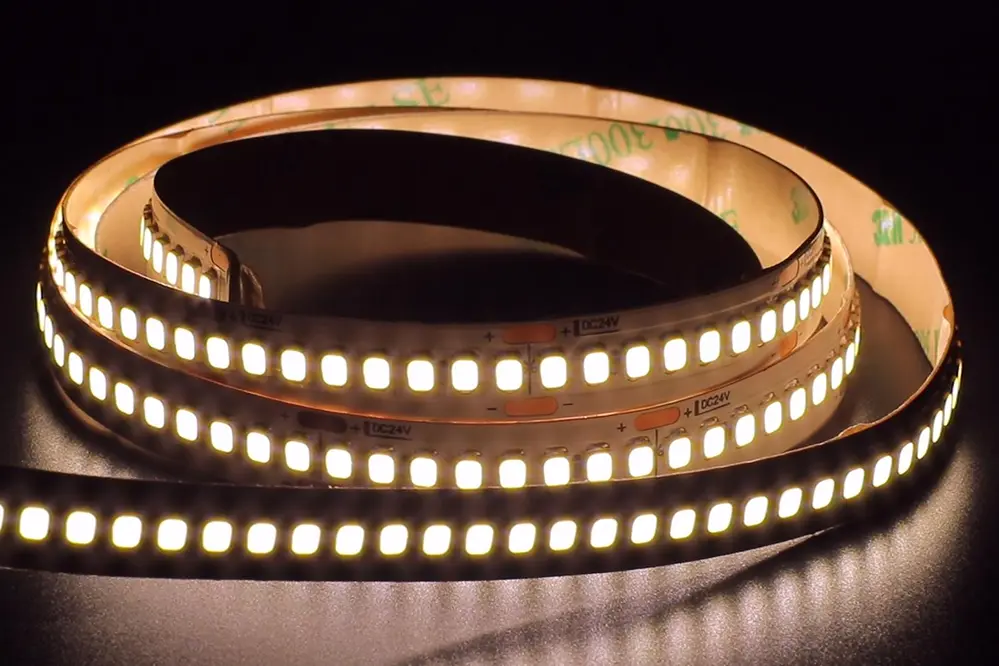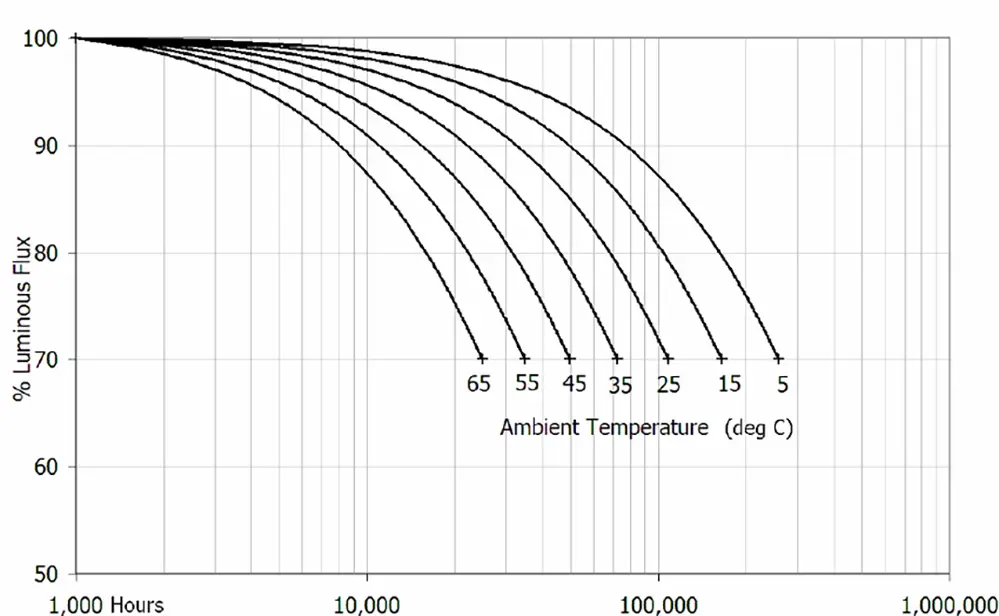Do LED Lights Get Brighter the Longer They Are On? Explained
- 2024-05-18 19:29
- UNITOP
Are you curious about whether LED lights increase in brightness the longer they stay on? Look no further for a definitive answer to this common query.
LED lights do not get brighter the longer they are on. As time goes by, LEDs experience lumen depreciation, causing them to gradually become dimmer instead of brighter.
Explore the fascinating world of LED lighting to uncover more insights and facts that will enhance your understanding of this innovative technology.
Understanding LED Technology

Light Emitting Diodes (LEDs) utilize semiconductor materials to convert electrical energy into visible light, eschewing traditional filament-based mechanisms.
These semiconductor-based light sources offer superior efficiency and longevity compared to incandescent and fluorescent lighting solutions, making them an attractive option for various applications where dimming capabilities are required.
The terms "lumens" and "watts" are fundamentally different in context to LEDs, providing critical understanding of their 'brightness efficiency.'
How LEDs Emit Light
LEDs, or Light Emitting Diodes, emit light through electroluminescence—a phenomenon where materials emit light in response to an electric current.
A typical LED only wastes about 20% of energy as heat, making it highly efficient.
This process involves electrons transitioning between different energy states within the semiconductor material, releasing photons—the basic units of light—in the process.
Electrons are excited by an electric current, and as they return to their original state, they emit light. This method ensures high efficiency and longevity.
Key Components of LEDs
An LED comprises several critical components, each playing an essential role in its functionality and efficiency, ensuring they deliver reliable and durable lighting solutions.
The primary part is the semiconductor material.
Usually made from compounds like gallium arsenide or gallium nitride, this semiconductor creates the ideal environment for electroluminescence, where electrons emit photons upon recombination. The quality of this material significantly influences the light’s color and efficiency.
Other key components include the lenses and optical elements, which shape and direct the light emitted. Additionally, the heat sink is crucial for dissipating the minimal heat generated, maintaining performance and longevity. This intricate assembly showcases the sophistication in modern LED technology.
Initial Brightness Levels

Upon initial activation, LEDs exhibit a pronounced brightness, a hallmark of their advanced design. This high illumination level is pivotal for applications demanding immediate and intense light output, ensuring that environments are well-lit from the outset.
Due to the inherent properties of the semiconductor materials used, LEDs achieve these remarkable brightness levels without requiring a warm-up period. This attribute is particularly advantageous in settings where consistent and reliable brightness is crucial. As a result, the initial brightness performance of LEDs positions them as an ideal choice for various lighting applications, from residential to industrial use.
Factors Affecting Initial Brightness
The initial brightness of LED lights is influenced by several key factors, including the quality of materials used and the design of the LED system.
Material quality directly impacts the efficiency of light emission, with superior materials yielding brighter initial outputs.
Additionally, the design and engineering of the LED system, particularly in thermal management and electrical control, play critical roles in modulating initial brightness levels and performance stability.
Finally, the driver technology employed in the LEDs affects how power is converted and delivered, ensuring optimal light intensity from the moment the lights are switched on. Each of these components, working in concert, ensures that LEDs provide superior initial brightness compared to traditional lighting alternatives.
Comparing Brand-New LEDs
When comparing brand-new LEDs, key performance indicators such as luminous efficacy, color rendering index (CRI), and thermal management should be evaluated.
- Luminous Efficacy: Measures the lumen output per watt of power consumed.
- Color Rendering Index (CRI): Indicates how accurately colors are rendered under the LED light.
- Thermal Management: Essential for maintaining brightness and extending the LED’s lifespan.
- Build Quality: Impacts durability and consistency of the light output.
- Driver Technology: Ensures efficient power conversion and stable operation.
These factors are critical in determining the initial brightness of LED lights.
Understanding these elements allows for informed comparisons between different LED products.
Evaluating these key aspects ensures that you choose the best LED for your specific lighting needs.
LED Brightness Over Time

LED lights generally do not brighten over time; in fact, due to factors such as gradual degradation, they tend to dim. This phenomenon is known as lumen depreciation, wherein the lighting output decreases as the LED ages, even though its overall lifespan may still extend far beyond that of traditional lighting solutions. Several factors, including thermal stress, drive current, and environmental conditions, contribute to this gradual decline in brightness. Understanding these dynamics is crucial for optimizing LED performance in long-term applications.
Causes of Brightness Degradation
Brightness degradation in LED lights typically arises from multiple interrelated factors intrinsic to their design and operating conditions.
Thermal Management: Poor heat dissipation can accelerate the aging process of LEDs, causing phosphor degradation and semiconductor wear. This leads to a noticeable drop in luminous output over time.
Drive Current: LEDs driven at higher currents than recommended by manufacturers can experience increased electron flow, which exacerbates the physical stress and leads to faster lumen depreciation.
Environmental Factors: LED lights exposed to extreme temperatures, humidity, or vibration, often found in industrial or outdoor settings, are more susceptible to premature degradation and reduced efficiency.
Electrical Overstress: Voltage spikes and transients in the power supply can inflict irreversible damage on LEDs, impacting their longevity and diminishing their brightness.
Routine maintenance and proper installation practices can mitigate these factors, ensuring consistent and long-lasting illumination.
Lifespan vs. Brightness
LED lights are known for their longevity and energy efficiency, but their brightness does diminish over time, contributing to overall energy consumption.
- Initial Luminous Output: The initial brightness of LED lights is typically at its peak when first installed.
- Lumen Depreciation: Over time, the lumen output of LEDs gradually decreases, a process known as lumen depreciation.
- L70 Rating: The industry-standard L70 rating indicates the point at which the LED's brightness has decreased to 70% of its initial output.
- Operational Conditions: Factors such as thermal management, drive current, and environmental stress impact the rate of lumen depreciation.
Understanding these factors is crucial for making informed decisions about LED lighting solutions.
Although LEDs do not brighten over time, they do maintain a relatively stable output compared to traditional lighting technologies.
Maximizing LED Performance
To ensure optimal LED performance, strategic installation and maintenance protocols are critical.
Regular cleaning and correct thermal management (e.g., heat sinks) are imperative to maintaining lumen output, extending the lifespan, and retaining color consistency. Additionally, using quality power supplies and drivers can effectively minimize power surges.
Industry standards like “binning” and “L70” aids in addressing the 'constant brightening'.
Maintenance Tips
Regular cleaning of LED fixtures is key for enhancing performance and longevity. Dust and debris can accumulate, diminishing light output and efficiency.
Ensure lighting components are free from these obstructions. Consistent cleaning schedules should be followed.
Incorporate proper thermal management to prevent overheating. Utilizing heat sinks and adequate ventilation can significantly prolong LED lifespan and maintain consistent brightness.
Lastly, periodic inspections are crucial. Look for signs of wear, such as discoloration or flickering, and replace components as necessary. Employing reputable brands and components ensures reliability and long-term performance, safeguarding your investment in LED technology and optimizing energy consumption.
Optimal Usage Conditions
To achieve peak performance and longevity from your LED lights, adhering to optimal usage conditions is crucial.
- Temperature Control: Maintain ambient temperatures within the specified range.
- Adequate Ventilation: Ensure proper airflow and cooling around fixtures.
- Quality Power Supplies: Utilize power supplies with stable output and surge protection.
- Durable Housing: Use fixtures with robust, weather-resistant casings for outdoor use.
- Proper Installation: Follow manufacturer guidelines for correct installation practices.
Implementing these measures ensures LEDs operate efficiently for their intended lifespan.
Adherence to these conditions also enhances light stability and color consistency.
Conclusively, these practices reduce maintenance costs and avoid premature LED failure.
Conclusion
After a comprehensive examination of LED light behavior, it is clear that LED lights do not brighten over time; in fact, they experience gradual lumen depreciation, leading to reduced light output.
Understanding the lifecycle of LEDs is paramount for managing expectations and ensuring optimal usage.
While LEDs offer substantial lifespan and energy efficiency, they are not devoid of degradation.
Regular maintenance and adhering to manufacturer recommendations can mitigate performance reductions.
Investing in high-quality LEDs and ensuring proper installation are pivotal steps in maintaining consistent light output over time.
Ultimately, proactive measures and informed usage guarantee the longevity and reliability of LED lighting systems.
